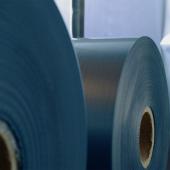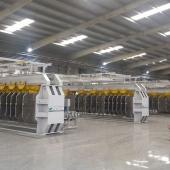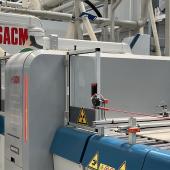From vintage to authentic living
Pamela Albanese - Tosilab (Fiorano, Italy)
The term vintage is commonly used for objects dating from several decades ago that we might gaze at nostalgically in a shop window or at an antiques fair or admire in the pages of furniture magazines devoted to icons of the past.
In particular, it refers to cult objects that were once top-of-the-range products and even today can offer fresh creative energy and inspiration.
The sociologist and consumer trend expert Francesco Morace refined the concept by introducing the phrase “Retro- Scapes” to refer to a way of looking back in time and “attempting to recall the mythical figures of the past and above all previous historical periods and focusing on the positive aspects [...], the defining feature of the phenomenon is its chaos, and the speed with which the ideas of the recent past are adopted”.
An equally important aspect is that the process draws inspiration simultaneously from different historical periods and fields of application. A good example in the world of design is the popularity of a retro style for furniture and electrical household appliances, although this trend is almost always limited to aesthetics and has nothing to do with functionality - effectively combining vintage forms with latest-generation technology to create innovative products.
As always, one trend is inevitably integrated with others. The values of the past become part of a narrative, reflecting the power of storytelling as one of the most influential and universal trends in contemporary culture.
[…]
In short, it is we ourselves who feed the myth of the past. And paradoxically, the new technologies help us do this more effectively.
Think for example of the hipster aesthetic that emerged in the midst of digital age, modelled on pure vintage stylistic cues and yet perfectly integrated into the world of social networking, apps and digital devices.
As a result, the world of interior design and fashion now makes extensive use of surfaces with two key characteristics: a look that can be defined as one of decadent beauty and content that reveals a sense of generational transition and a strong focus on tradition.
Revisiting previously used materials is now standard practice for many companies. It matters little whether the change is major or minor, the important thing is that the surface must clearly have derived from something that previously had a different function. The different types of wear these materials have experienced reflect their previous existences. They tell an authentic story that transforms them into something living that is capable of bringing together different times and distant places.
This quest for novel surfaces involves searching for or recreating different kinds of alterations according to the base used: oxidised metal; wood damaged by light and humidity; concrete that has been scratched, stained or contaminated by other substances; scuffed, faded stone worn down by many years of foot traffic and covered with salt efflorescence or mould.
[…]
As analysts, we have defined this attitude as authentic living, a preference for things that are real and therefore display all the imperfections that are associated with this condition of authenticity. Consider the field of music. The rhythms of the seventies and eighties are enjoying a revival and are all around us. Even more interestingly, talent scouts are now looking for voices that stand out for their authenticity rather than their perfection or precision. […]
Never before has simple authenticity with a wealth of content been so fashionable. […]
Last but not least, when design magazines run features on homes they propose them as stories that intertwine with the biographies of the owners. The message conveyed is that today’s homes must have the clear purpose of promoting well-being. Their beauty derives from the fact that they are an authentic expression of specific habits and needs, with an emphasis on comfort and emotions.
This means that the imprint of the architect and the fashion of the moment are not the predominant elements. The most important aspect is the personality of the people who live there, expressed as a melding of old and new, craft and hitech, design objects and bric-abrac.
Read the full article published on Ceramic World Rewiew 114/2015
Did you find this article useful?
Join the CWW community to receive the most important news from the global ceramic industry every two weeks





















